25 Years Since The Capsizing Of The [Herald Of Free Enterprise]
Advertisements:
[MS Herald of Free Enterprise was a roll-on roll-off (RORO) car and passenger ferry owned by Townsend Thoresen. She was one of three ships commissioned by the company to operate on the Dover–Calais route across the English Channel. The ferry capsized on the night of 6 March 1987, moments after leaving the Belgian port of Zeebrugge, killing 193 passengers and crew. This was the deadliest maritime disaster involving a British ship in peacetime since the sinking of the Iolaire in 1919.
The ship left her berth in Zeebrugge inner harbour at 18:05 (GMT) with a crew of 80 and carrying 459 passengers, 81 cars, 3 buses and 47 lorries. She passed the outer mole at 18:24 and capsized about four minutes later.
When the ferry reached 18.9 knots (35.0 km/h; 21.7 mph) 90 seconds after leaving the harbour, water began to enter the car deck in large quantities. The resulting free surface effect destroyed her stability.
In a matter of seconds, the ship began to list 30 degrees to port. The ship briefly righted herself before listing to port once more, this time capsizing. The entire event took place within 90 seconds. The water quickly reached the ships electrical systems, destroying both main and emergency power and leaving the ship in darkness.
The ship ended on her side half-submerged in shallow water 1 kilometre (0.5 nmi; 0.6 mi) from the shore. Only a fortuitous turn to starboard in her last moments, and then capsizing onto a sandbar, prevented the ship from sinking entirely in much deeper water.
Crew aboard a nearby dredger noticed the Heralds lights disappear, and notified the port authorities. The alarm was raised at 18:26 British time (or 19:26 Belgian time). A rescue helicopter arrived within half an hour, shortly followed by assistance from the Belgian Navy, who were undertaking an exercise within the area.
The disaster resulted in the deaths of 193 people. Many of those on board had taken advantage of a promotion in The Sun newspaper offering cheap trips to the continent. Most of the victims were trapped inside the ship and succumbed to hypothermia because of the frigid (3 °C) water. The rescue efforts of the Belgian Navy limited the death toll. Recoverable bodies were removed in the days following the accident. During the rescue the tide started to rise and the rescue team was forced to stop all efforts until morning and the last of the people left on board died of hypothermia]. – Wikipedia
Photos: The wreck of the Herald of Free Enterprise, which capsized near Zeebrugge on the 6th of March 1987. (Photo by Hulton Archive/Getty Images). 1987
The ship left her berth in Zeebrugge inner harbour at 18:05 (GMT) with a crew of 80 and carrying 459 passengers, 81 cars, 3 buses and 47 lorries. She passed the outer mole at 18:24 and capsized about four minutes later.
When the ferry reached 18.9 knots (35.0 km/h; 21.7 mph) 90 seconds after leaving the harbour, water began to enter the car deck in large quantities. The resulting free surface effect destroyed her stability.
In a matter of seconds, the ship began to list 30 degrees to port. The ship briefly righted herself before listing to port once more, this time capsizing. The entire event took place within 90 seconds. The water quickly reached the ships electrical systems, destroying both main and emergency power and leaving the ship in darkness.
The ship ended on her side half-submerged in shallow water 1 kilometre (0.5 nmi; 0.6 mi) from the shore. Only a fortuitous turn to starboard in her last moments, and then capsizing onto a sandbar, prevented the ship from sinking entirely in much deeper water.
Crew aboard a nearby dredger noticed the Heralds lights disappear, and notified the port authorities. The alarm was raised at 18:26 British time (or 19:26 Belgian time). A rescue helicopter arrived within half an hour, shortly followed by assistance from the Belgian Navy, who were undertaking an exercise within the area.
The disaster resulted in the deaths of 193 people. Many of those on board had taken advantage of a promotion in The Sun newspaper offering cheap trips to the continent. Most of the victims were trapped inside the ship and succumbed to hypothermia because of the frigid (3 °C) water. The rescue efforts of the Belgian Navy limited the death toll. Recoverable bodies were removed in the days following the accident. During the rescue the tide started to rise and the rescue team was forced to stop all efforts until morning and the last of the people left on board died of hypothermia]. – Wikipedia
Photos: The wreck of the Herald of Free Enterprise, which capsized near Zeebrugge on the 6th of March 1987. (Photo by Hulton Archive/Getty Images). 1987
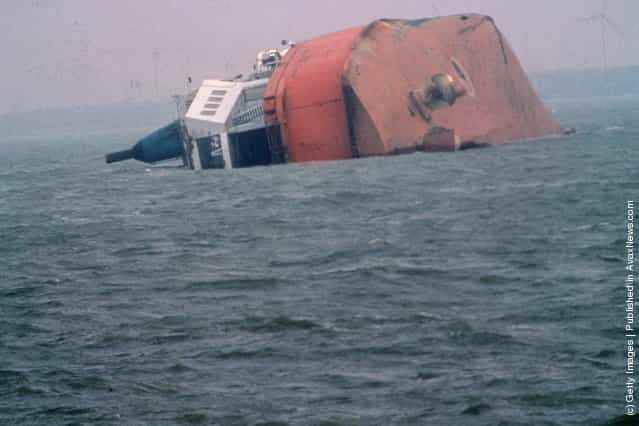
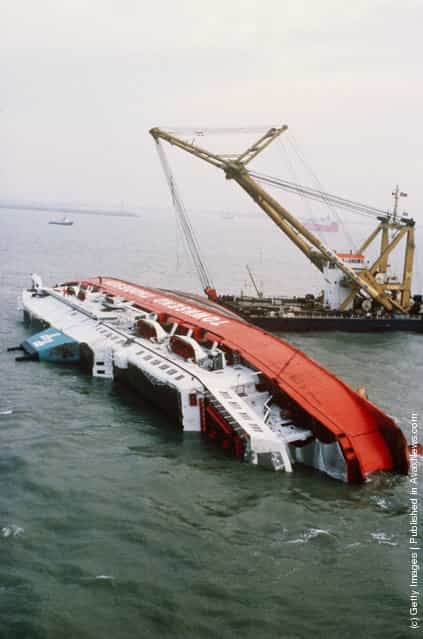
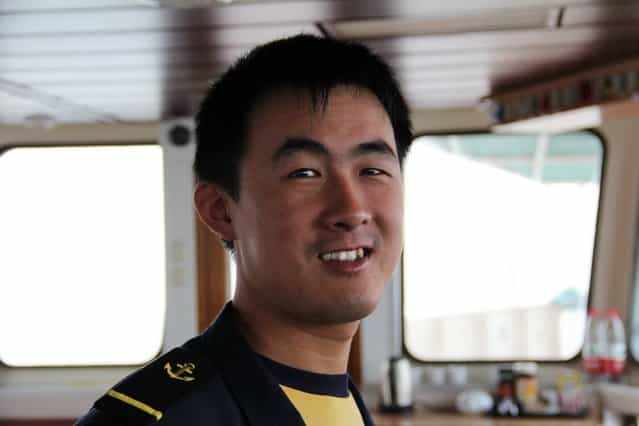
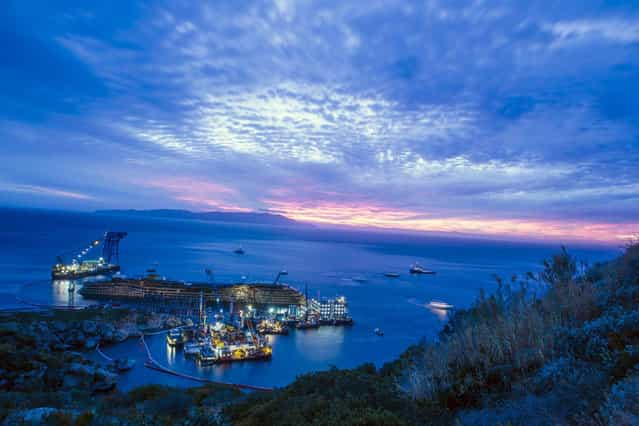
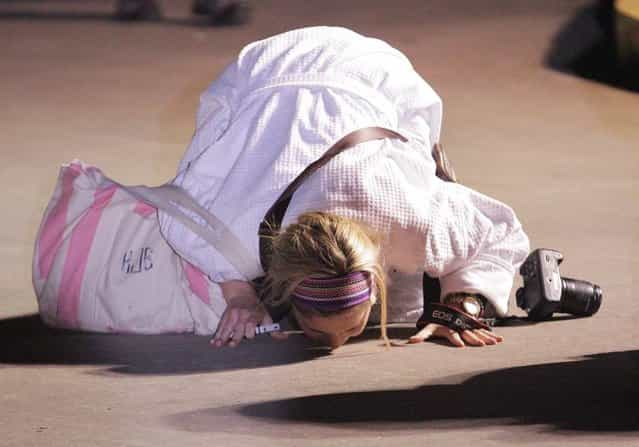
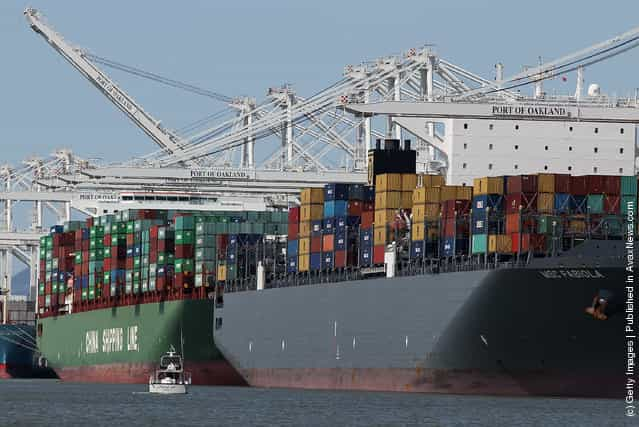
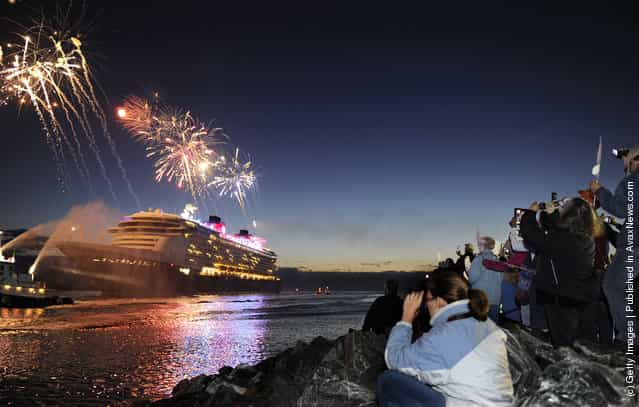

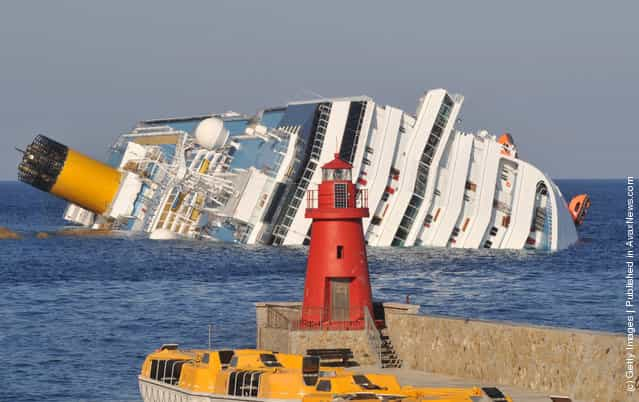
![[Disney Fantasy] Launches From German Shipyard [Disney Fantasy] Launches From German Shipyard](http://img.gagdaily.com/uploads/posts/app/2013/short/00005fbc_medium.jpg)

![Rare [Hybrid] Total Solar Eclipse Rare [Hybrid] Total Solar Eclipse](http://img.gagdaily.com/uploads/posts/fact/2013/short/00010c55_medium.jpg)






